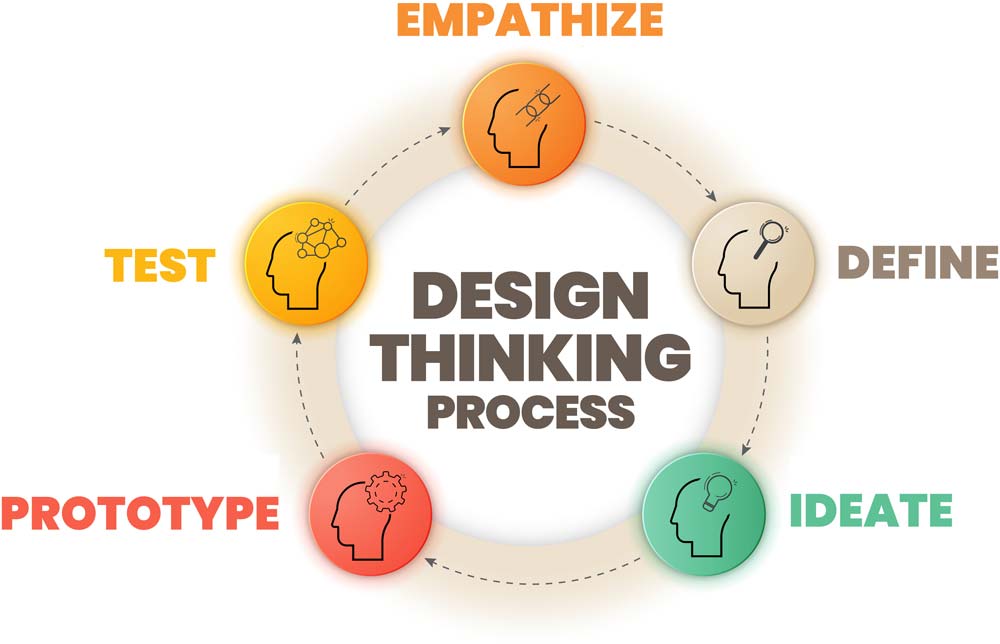Design Thinking
“Design thinking is a human-centred approach to innovation that draws from the designer’s toolkit to integrate the needs of people, the possibilities of technology, and the requirements for business success.”
– Tim Brown, president and CEO, IDEO

Clarify
The first phase is about narrowing down the focus of the design thinking process. It involves identifying the problem statement to come up with the best outcome. This is done through observation and taking the time to determine the problem and the roadblocks that prevented a solution in the past.
Various tools and frameworks are available—and often needed—to make concrete observations about users and facts gathered through research. Observing without assumptions or biased expectations is critical regardless of which tools are implemented.
Once findings from your observations are collected, the next step is to shape insights by framing those observations. You can venture into the abstract by reframing the problem as a statement or question.
Ideate
Once the problem statement or question has been finalized, the next step is ideation. In this stage, you can use a tool such as systematic inventive thinking (SIT), which helps create an innovative process that can be replicated.
The goal is to ultimately overcome cognitive fixedness and devise new and innovative ideas that solve the problems you identified. Continue actively avoiding assumptions and keeping the user in mind during ideation sessions.
Develop
The third phase involves developing concepts by critiquing a range of possible solutions. This includes multiple prototyping, testing, and experimenting rounds to answer critical questions about a concept’s viability.
Remember: This step isn’t about perfection but experimenting with different ideas and seeing which parts work and which don’t.

Implement
The fourth and final phase, implementation, is when the entire process comes together. As an extension of the development phase, implementation starts with testing, reflecting on results, reiterating, and testing again. This may require returning to a prior phase to iterate and refine until you find a successful solution. This approach is recommended because design thinking is often a nonlinear, iterative process.
In this phase, don’t forget to share results with stakeholders and reflect on the innovation management strategies implemented during the design thinking process. Learning from experience is an innovation process and design thinking project.
